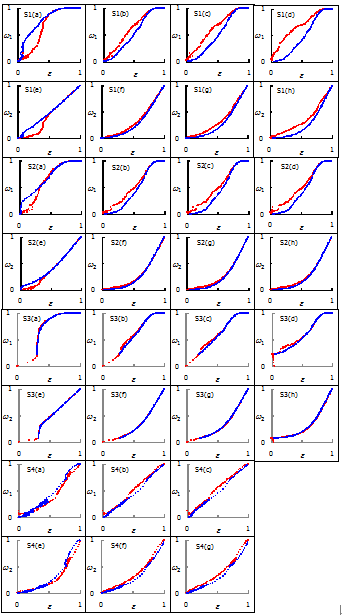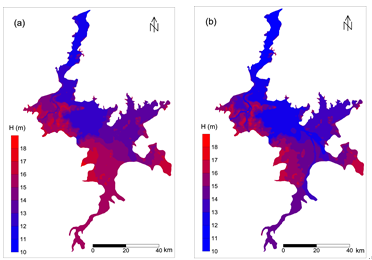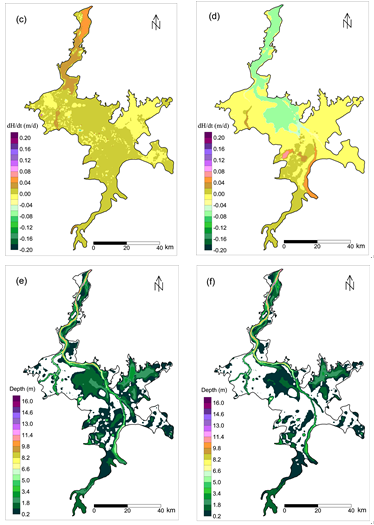大湖洪泛区水文磁滞现象研究取得进展
湖泊洪泛区水文过程复杂,其水文非线性特征之一为水位上涨和消退的磁滞现象。张奇等以鄱阳湖及其洪泛区为研究对象,采用具有物理机制的分布式水文水动力模型,研究湖泊-洪泛区系统的水文磁滞现象。发现:湖泊水面面积、湖泊蓄水量与湖泊水位之间的关系存在明显的顺时针磁滞特征(除了最南部局部湖区表现出逆时针磁滞现象);磁滞的非线性程度主要受流域入湖径流过程的影响,长江水位是次要因素;洪泛区湿地植物特征对磁滞非线性程度影响显著,植物密度的增加将增强磁滞的非线性程度。本文的研究结果对深入认识大湖湖泊-洪泛区系统水文基本规律具有重要意义,并首次对洪泛区和永久水体区域的磁滞非线性程度做了定量区分。研究成果发表在水文学主流刊物Journal of Hydrology上(http://dx.doi.org/10.1016/j.jhydrol.2015.04.068)。

Normalized area-stage and volume-stage relationships for the Lake-floodplain system for Scenarios S1 to S4. Graphs (a) to (d) depict area-stage relationships for Kangshan, Duchang, Xingzi and Hukou stations, respectively. Graphs (e) to (h) show volume-stage relationships for Kangshan, Duchang, Xingzi and Hukou stations, respectively. The red and blue dots represent the rising and falling limbs, respectively. The horizontal axis is normalized water level elevation (e), and the vertical axis is normalized water area (w1) or storage (w2).


Simulated water level changes for S1. (a) and (b) are for water level elevations at rising (2 April, 12 m water level elevation at Xingzi station) and falling (16 November, 12 m water level elevation at Xingzi station) periods. (c) and (d) are for water level change rates at the same times. (e) and (f) are the water depths at the same times. The white area in (e) and (f) within the floodplain denotes water depths less than 0.2 m.
